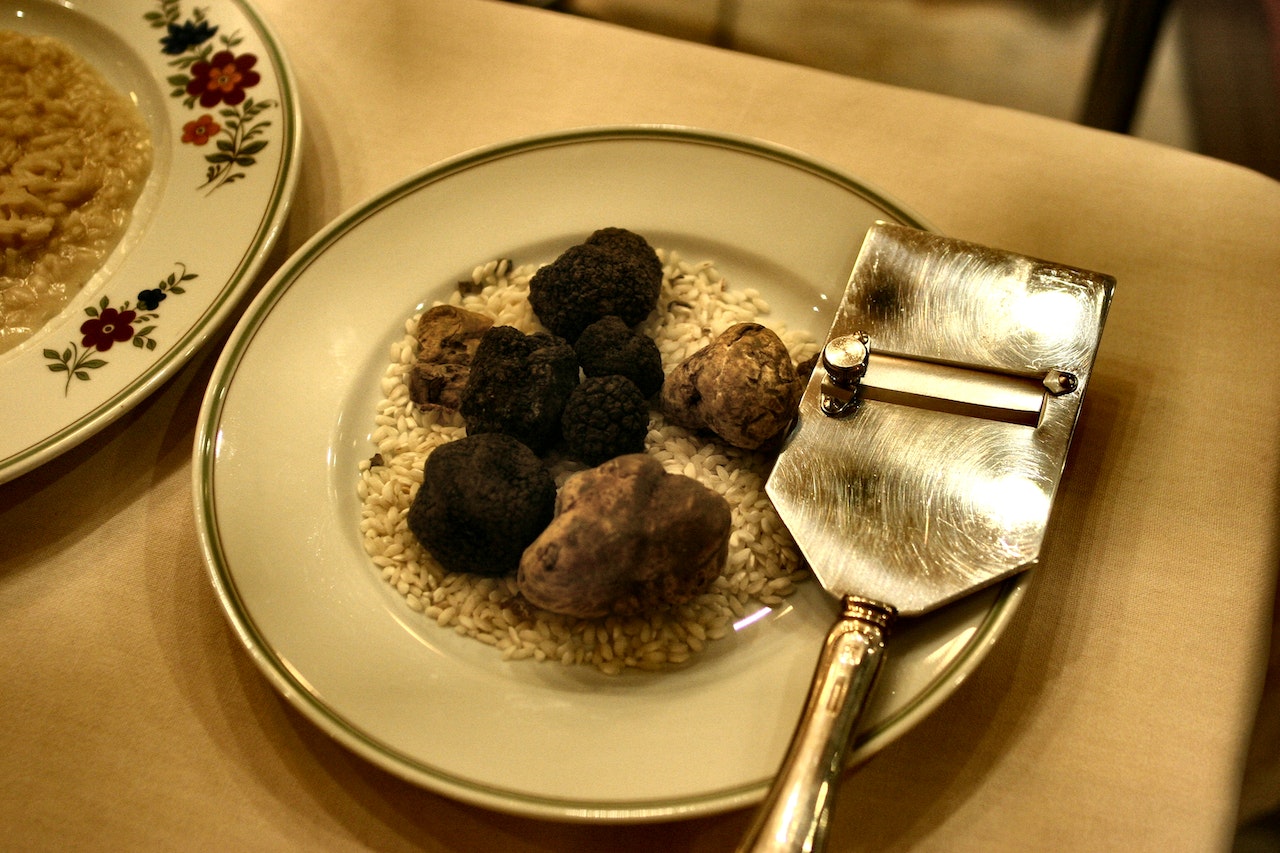How Truffles Took Root Around the World
For centuries, the wild delicacy grew only in Europe. But improved cultivation techniques have enabled the pricey fungus to be farmed in new places.
Every morning for three months of the year, Lola wakes at 8 and goes hunting. She races past oak trees, running at full speed through a 50-hectare field set in the southern end of the province of Buenos Aires, Argentina. The daily challenge — to find her elusive prey — never fails to excite Lola. She darts from place to place until faltering at last: 40 minutes into her day, she gets distracted or simply gives in to exhaustion.
Lola is a Brittany spaniel, and beneath her orange-spotted white coat is the agile body of a hunter. But her most important tool is her sense of smell. “Through training, dogs learn to recognize substances in their long-term memory — in this case, the smell of truffles,” says dog trainer Germán Escobar.
A graduate of the University of Buenos Aires who originally hails from Colombia, Escobar has trained Lola and the eight other dogs of the Argentine truffle farm Trufas del Nuevo Mundo, located in Espartillar, a small town of 785 inhabitants.
With 100 million to 300 million olfactory receptors in the nose — humans have only 5 million to 6 million — and a region in their brains dedicated to odor analysis that’s 40 times larger than that of Homo sapiens, trained dogs are able to do what no human can: Track one of the most valuable and desired delicacies, what’s called the “black diamond” of the kitchen, deep underground.
For centuries, truffles were found exclusively in European countries such as Spain, Italy and France, where they grow in the wild. But over the past 50 years, truffle production has experienced an incredible global expansion, thanks to cultivation techniques that have given rise to plantations in far-flung regions. Today, the United States, China, Greece and Turkey as well as countries across the Southern Hemisphere — Australia, New Zealand, South Africa, Chile and Argentina — have emerged as new producers of the famous fungi.
At least 180 species of truffle are known, although only about 13 are of any commercial interest: the black truffle (Tuber melanosporum, from the Latin tubera, meaning lump, hump or swelling) is one of the most celebrated and coveted. In July 2022, a kilo of black truffles went for 1,350 euros. Another highly valued species is the white truffle (Tuber magnatum), also known as Trifola d’Alba Madonna (Truffle of the White Virgin), for which festivals are organized in Italy every year.
World truffle production has grown in recent years thanks to the increase in cultivation of this prized fungus, says a 2021 analysis published in the journal Forests. Spain leads world production of black truffles, with an annual average of 47 tons, followed by France and Italy.
The scent of truffles
Each of these natural jewels — black, rough, spherical, some as big as apples — is a miniature aroma factory. Some say that the black truffle smells like cold mountain air, or damp earth. Others say it evokes the smell of boiled potato, cauliflower, black olive, butter, mushroom, sulfur or garlic.
In 1825, the French gastronome Jean Anthelme Brillat-Savarin crowned it as “the jewel of the kitchen” and highlighted it as an aphrodisiac. Italian composer Gioachino Rossini went further and declared this mushroom the “Mozart of mushrooms.” And it was said that the English poet Lord Byron used to keep a truffle on his desk, confident that its perfume would stimulate creativity and attract the muses.
The truffle’s unique aroma is the result of a set of volatile organic compounds (VOCs) produced by the fungus. Far from being the result of a single molecule, the odors we perceive are produced by tens or hundreds of these invisible airborne particles. The structure of each VOC molecule is usually based on a hydrocarbon skeleton, with oxygen, nitrogen and sulfur as the most common atoms other than carbon or hydrogen; the molecules are all around us, and those that are generated by living organisms directly or indirectly influence the life of plants, insects and even humans by contributing to communication, mating and even the generation of flavors and aromas. For example, the smell of coffee is produced by at least a thousand chemical compounds that enter through our nostrils and meet our olfactory receptors. In strawberries, the number is more than 300 VOCs.
Of all fungi, truffles are among those that emit the highest amount of volatile organic compounds. More than 200 of these have been identified so far in various truffle species. Both black and white truffles pump out a mixture of alcohols, ketones, aldehydes, dimethyl sulfide, dimethyl disulfide, diacetyl, ethylphenol, furaneol and octenol.
“The aroma potency varies according to truffle type,” wrote Italian chemist Elisabetta Torregiani and her team at the University of Camerino in a paper published in 2020 in the journal Molecules. “Black truffles are considered to be the most aromatic of all,” while summer truffles are the least, and white truffles are in the middle.
